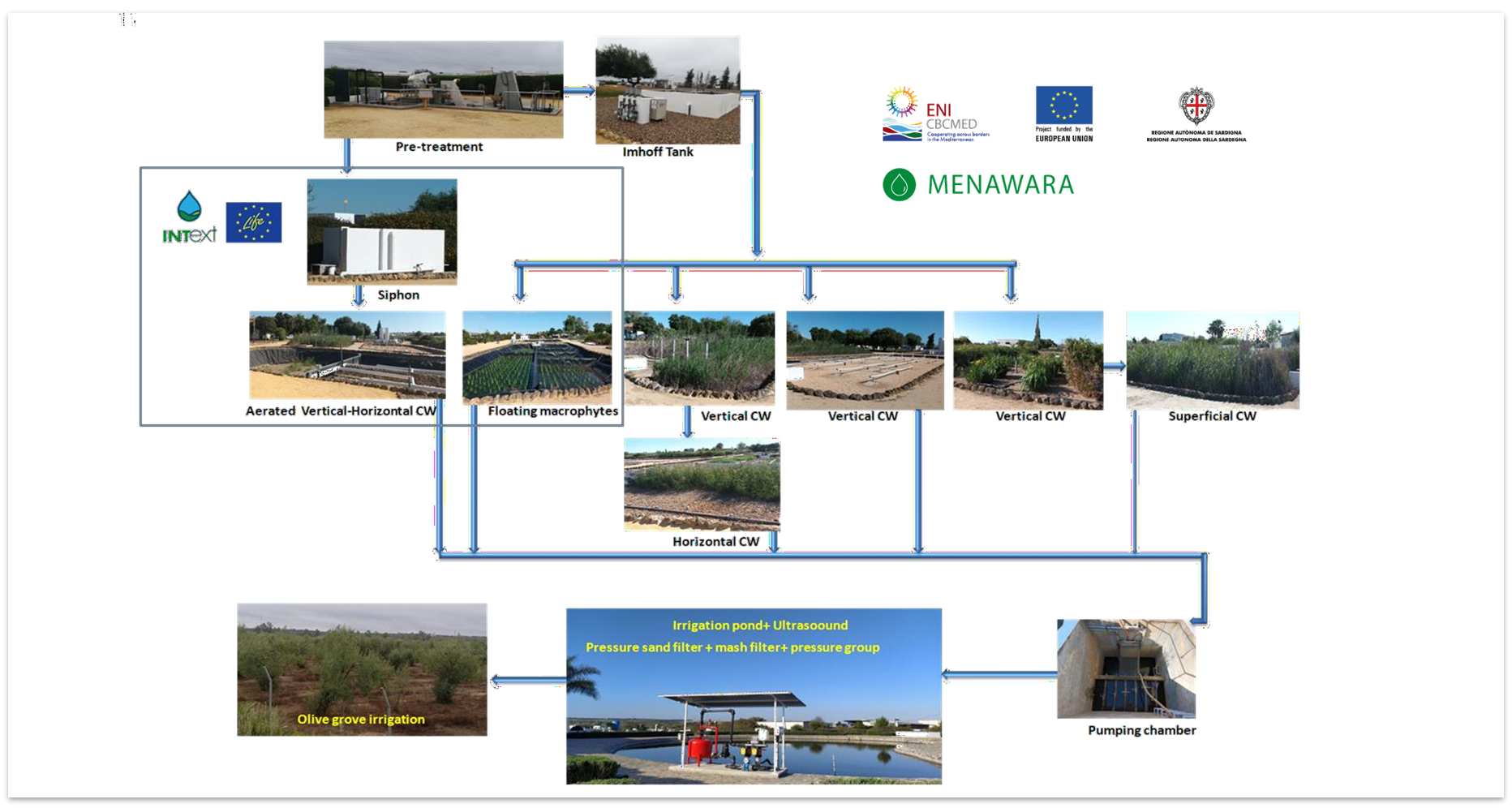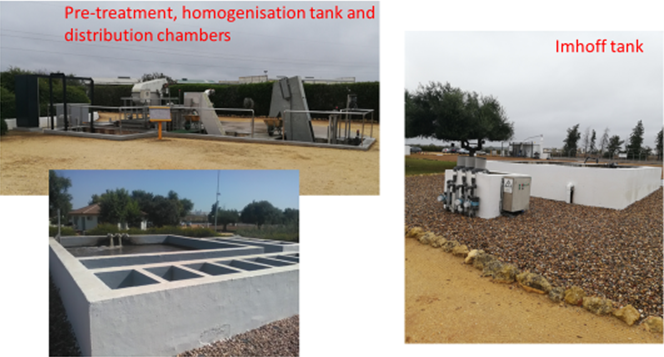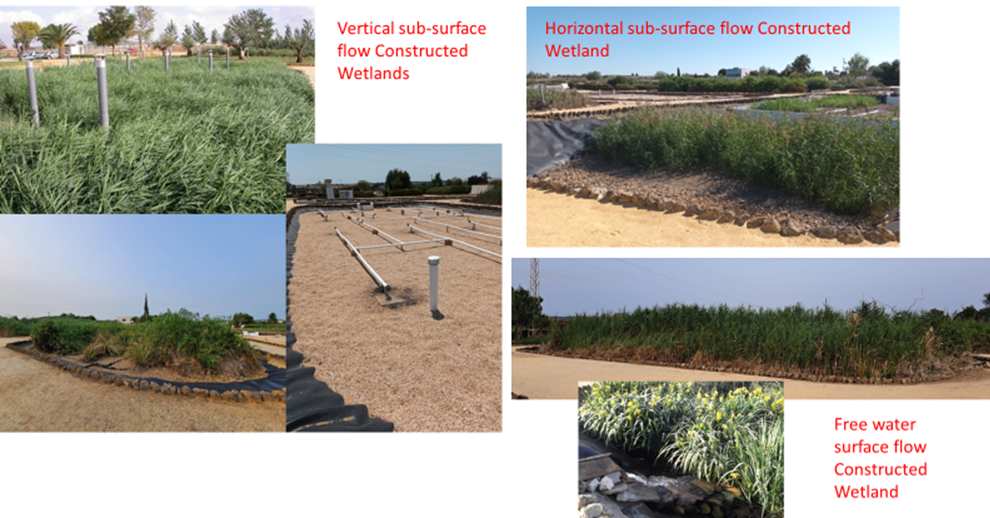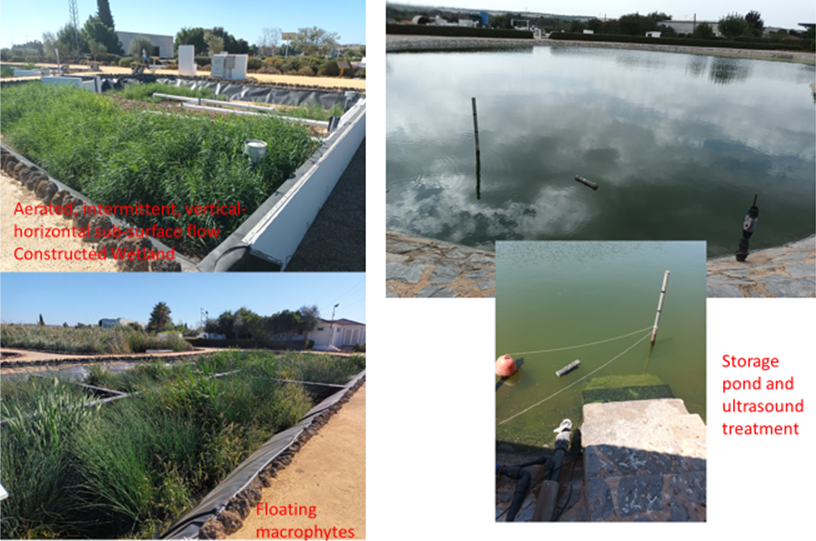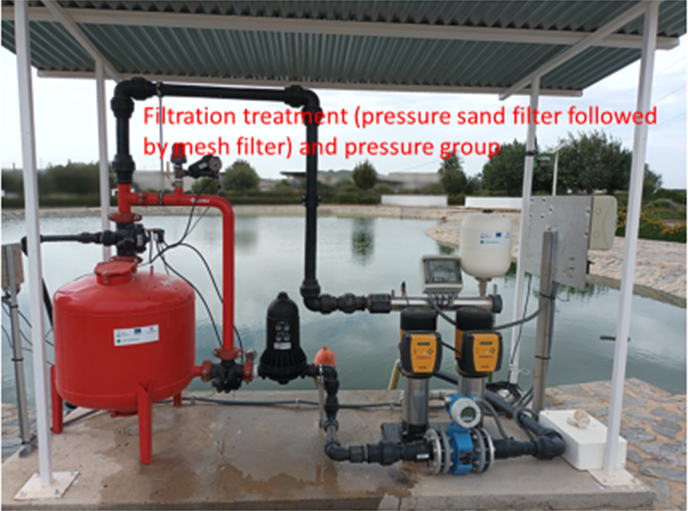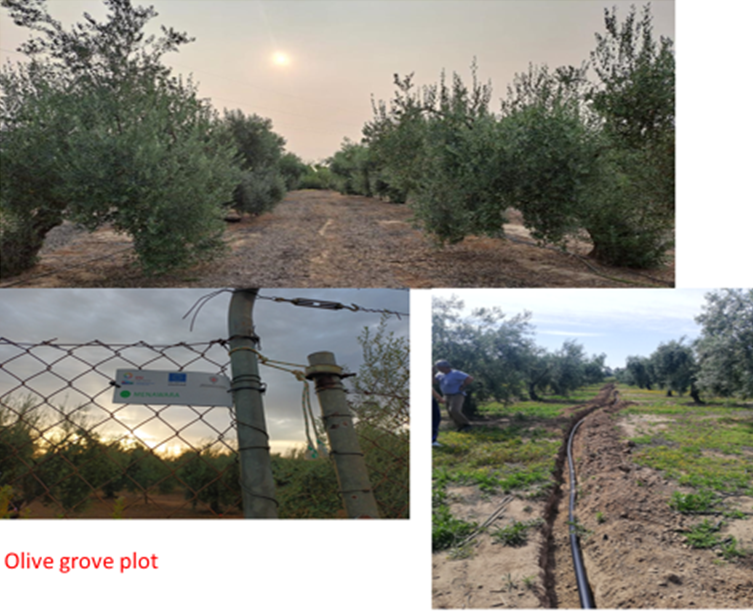
Section outline
-
Aiming at improving the wastewater treatment processes according to the "fit for purpose" principle, the previously installed treatment train has been completed with additional or complementary treatment processes that could diminish the residual pollutant load to admissible values for the intended use. It was important to remove some pathogenic microorganisms that have survived the purification treatments (bacteria and parasitic-helminth) as well as reducing the level of suspended solids, and other pollutant species, to ensure the adequate sanitary and environmental quality of the water, according to established standards (EU Regulation 2020/741 on minimum requirements for water reuse).
The post-treatment train is then fed from the already existing treatment based on anaerobic primary treatment (Imhoff tank) and different kind of constructed wetlands (vertical and horizontal subsurface flow, free water surface flow and floating macrophytes) working as primary, secondary and tertiary treatments. The treated wastewater is diverted to an accumulation pond used for irrigation of olive groves by surface drip irrigation, where an ultrasound treatment is implemented for the microalgae and E. coli removal. The outlet of this pond is treated by the projected filtration unit- pressure sand filter followed by mesh filter.
